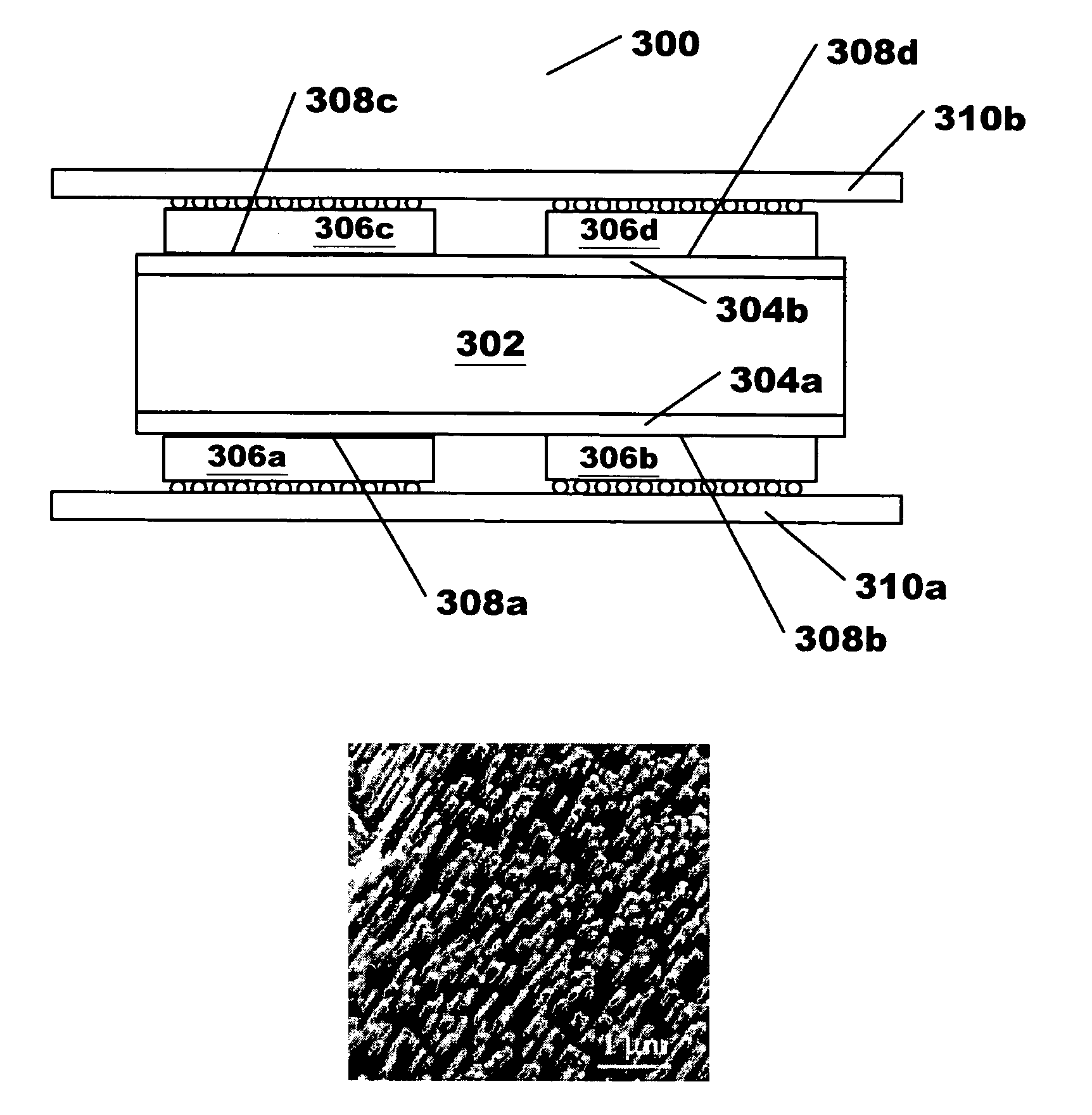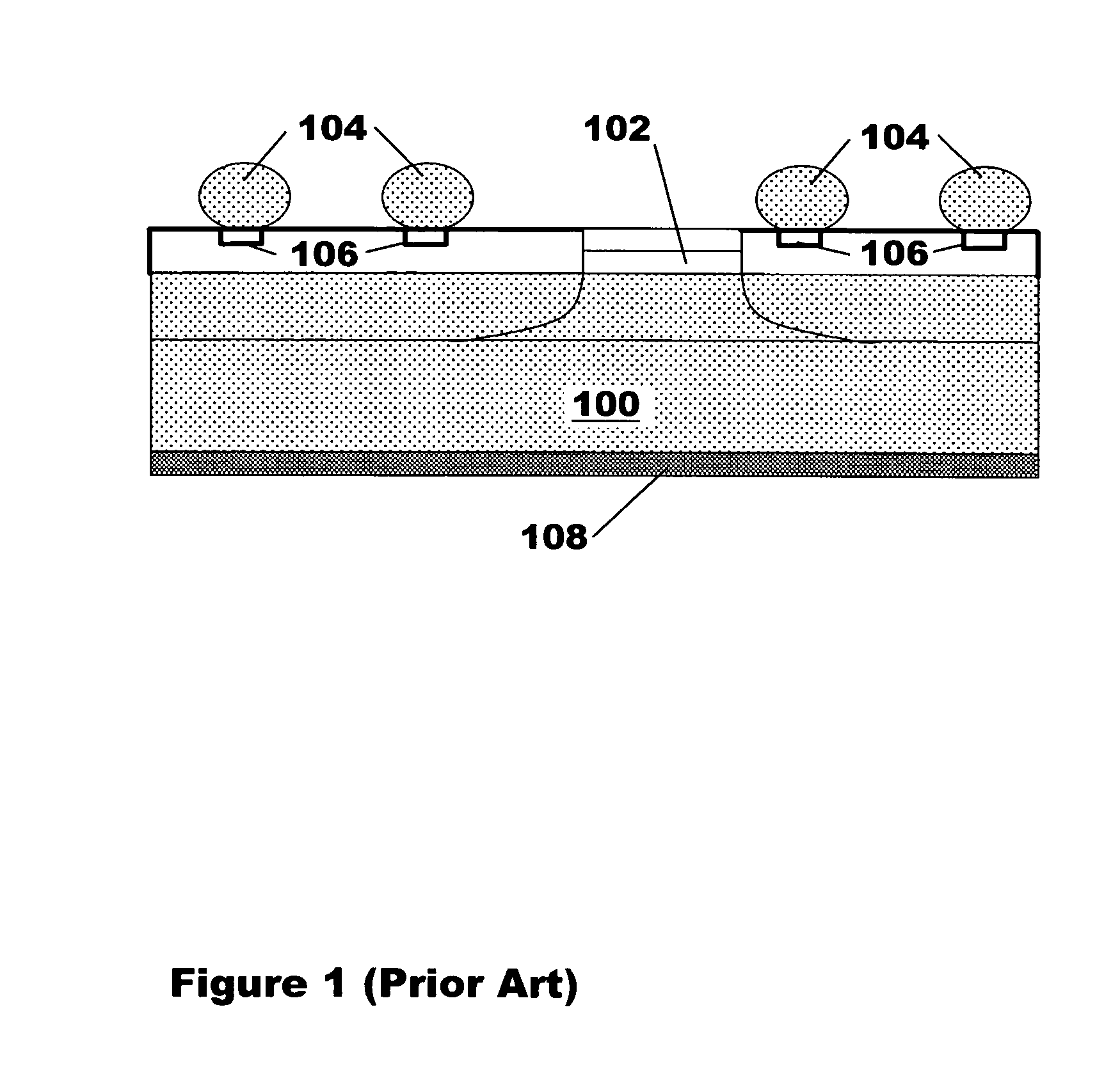System and method using self-assembled nano structures in the design and fabrication of an integrated circuit micro-cooler
a technology of micro-coolers and nano-structures, applied in the direction of material nanotechnology, semiconductor devices, semiconductor/solid-state device details, etc., can solve the problems of increasing the total die, increasing the difficulty of heat transfer, and inability to dissipate the heat generated by current ics
- Summary
- Abstract
- Description
- Claims
- Application Information
AI Technical Summary
Benefits of technology
Problems solved by technology
Method used
Image
Examples
Embodiment Construction
[0022]FIG. 1 (prior art) has been addressed above in the Background section of this disclosure.
[0023]FIG. 2 is a schematic side view 200 of integrated micro-cooler device 202 attached to a flip chip integrated circuit 206 according to an embodiment of the present invention. The integrated micro-cooler device 202 is a separate structure from chip 206 containing highly conductive, self assembled nano structures, integrated with heat sinking devices. It provides a low thermal resistance path for heat transferred from surface 208 of the integrated circuit chip 206 mounted on circuit board 210 below. Thermal interface layer 204 provides a low resistance interface containing nano-structures to enhance heat conduction from chip 206, reduce the impact of local hot spots in chip 206, and laterally conduct heat to a heat sink structure 202 of greater footprint than the chip 206. Structural details of micro-cooler device 202 are disclosed below. Chip 206 and micro-cooler 202 may be bonded toge...
PUM
| Property | Measurement | Unit |
|---|---|---|
| temperatures | aaaaa | aaaaa |
| thickness | aaaaa | aaaaa |
| thickness | aaaaa | aaaaa |
Abstract
Description
Claims
Application Information
 Login to View More
Login to View More - R&D
- Intellectual Property
- Life Sciences
- Materials
- Tech Scout
- Unparalleled Data Quality
- Higher Quality Content
- 60% Fewer Hallucinations
Browse by: Latest US Patents, China's latest patents, Technical Efficacy Thesaurus, Application Domain, Technology Topic, Popular Technical Reports.
© 2025 PatSnap. All rights reserved.Legal|Privacy policy|Modern Slavery Act Transparency Statement|Sitemap|About US| Contact US: help@patsnap.com



